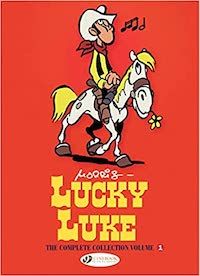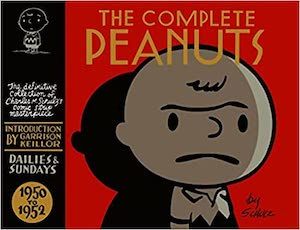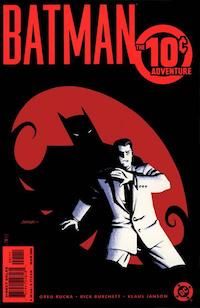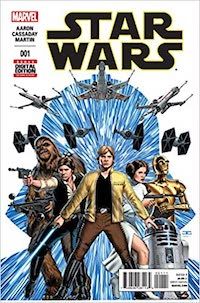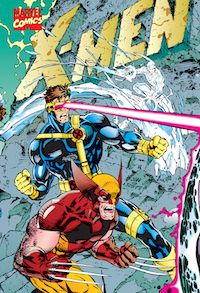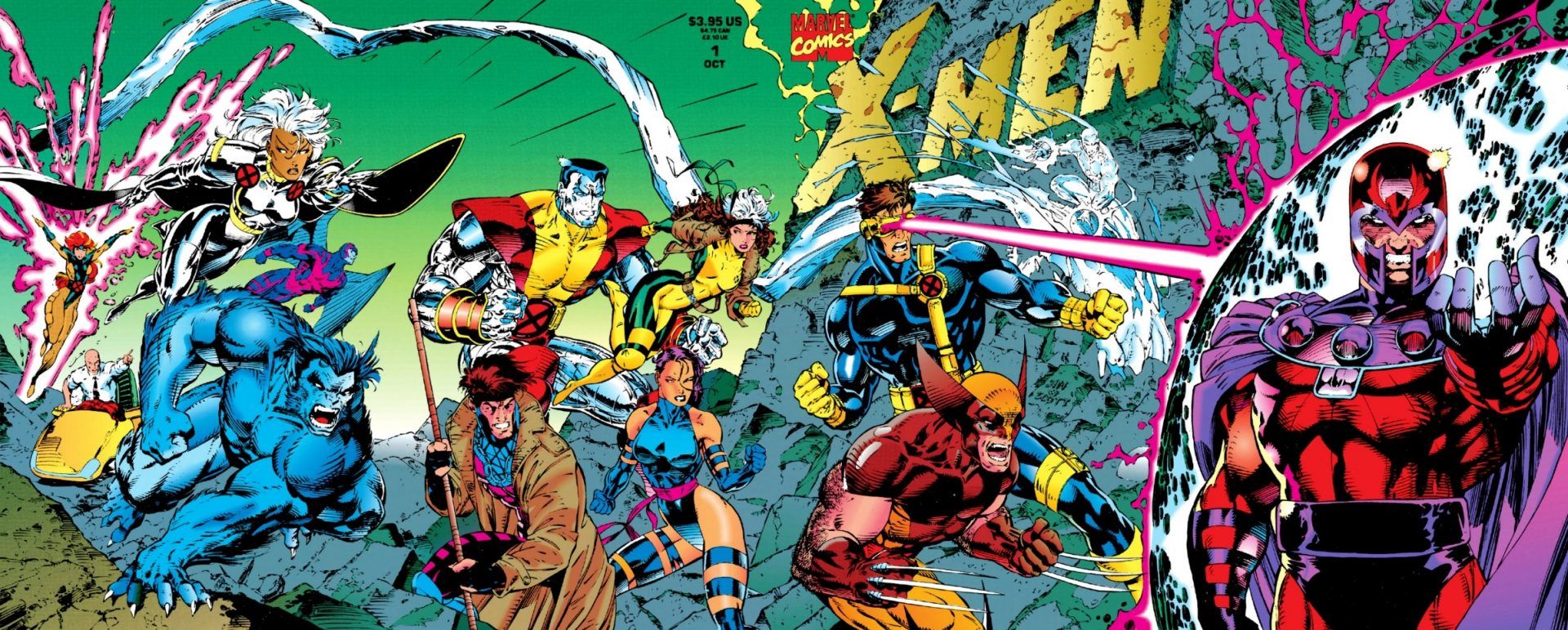
The Bestselling Comics of All Time
For almost a century now, what we think of as “comics” have been beloved all over the world. Dozens of characters from comic strips, comic books, graphic novels, and manga have become household names; film adaptations rake in billions of dollars.
But what is the bestselling comic of all time? Well, that depends on how you define comic.
Are we talking about single issues, or “floppies?” And if so, are we talking about the sales of one issue, or the series as a whole? Does that include collected editions and reprints? How do you account for changes in the retail market, from newsstands to specialty shops to digital, and the different reporting (or lack thereof) of each? How do you take into account the cultural changes since the ’40s, when over 90% of children read comics, compared to today’s globalized, media-saturated world? Should you account for the differences in population between America (331.9 million potential readers) versus Japan (125.7 million) versus, say, Finland (5.5 million)? Isn’t it apples and oranges to compare One Piece to X-Men to Peanuts, anyway?
The answer is: I have no idea (but they should definitely do a crossover). So I’m going to give you a bunch of lists measuring different things, and we’ll all learn some interesting trivia for our next cocktail parties, okay?
Please note that while I’ve tried to look at global sales where I can, my expertise is in American comics and there are definitely gaps in my knowledge!
Bestselling Comic Series (Collected Editions, Albums, and Tankouban)
First up, let’s look at series of book collections. By this, I mean books — as opposed to single issues or magazines — that have multiple volumes, i.e. every volume of Garfield or Naruto. Since this list adds up total sales of all the books in the series, the advantage obviously goes to anything that publishes a) frequently and b) for a looong time.
5. Lucky Luke, created by Morris
Lucky Luke is a Belgian comic series created by the artist Morris in 1946, though there have been numerous other collaborators and creators over the years, especially after Morris’s death in 2001. It’s an American Wild West parody, and the 82 albums in the series (all available in English!) have sold about 300 million copies. That’s 30 times the population of Belgium!
4. Golgo 13, created by Takao Saito
This manga about a professional assassin started in 1968, making it the oldest manga still in publication as well as one of the bestselling. It has continued to be published even after Saito’s death in 2021, in accordance with his wishes, and has sold over 300 million copies.
3. Peanuts by Chales Schulz
Peanuts is one of the longest running and most beloved American comic strips of all time. It ran from 1950 to 2000, and notably, Schulz wrote and drew every strip himself, a Herculean feat. Around 370 million collected volumes have been sold.
2. Asterix, created by René Goscinny and Albert Uderzo
One of the most famous European — specifically Franco-Belgian — comics of all time, Asterix is about a village of Gaulish warriors fighting off the Roman Republic. Goscinny and Uderzo created it in 1959; new creators have taken over after their deaths. The 39 volumes (so far) have sold about 370 million copies.
1. One Piece by Eiichiro Oda
This manga about pirate Monkey D. Luffy and his crew of Straw Hat Pirates has sold over 500 million copies worldwide, blowing the nearest competition out of the water. Most impressively, to my mind? It’s only been around since 1997, meaning it’s sold more than any other comic on this list in a fraction as many years.
Bestselling Comic Series (Single Issues)
Take this one with a grain of salt — first, because the list I found on Statista.com is eight years old, and second, because it doesn’t define its categories. “Spider-Man,” for example, has apparently sold 360 million single issues worldwide — and arriving at that figure comes with its own difficulties, as we’ll see in our next list — but is that just comics called Spider-Man? Or does it include Amazing Spider-Man, Ultimate Spider-Man, etc.? What exactly are we measuring here?
Anyway, here’s some ammo for your Marvel vs. DC arguments:
5. Captain America: 210 million copies
4. X-Men: 270 million copies
3. Spider-Man 360 million copies
2. Batman: 460 million copies
1. Superman: 600 million copies (YESSS MY DUDE)
Bestselling Single Issue
Okay, here’s the real headache. During the most successful decades of the mainstream U.S. comic book industry, the ’40s through the ’60s, there was no centralized, public reporting of sales figures. We know that the sales back then put today’s comics to shame — for example, Captain Marvel Adventures had a circulation of 1.3 million copies a month in 1945, and that was every single issue. Superman books and various Disney titles sold similarly well. But I can’t tell you which single issue sold the most back then, of Captain Marvel Adventures or any other book.
The other problem is that sales figures, then and now, generally don’t reflect sales to readers — they reflect sales to retailers. Captain Marvel Adventures had a circulation of 1.3 million copies to newsstands; more recent decades have sales figures to comic book stores. Though even that is harder to come by now that neither DC nor Marvel are distributing their books via Diamond anymore. But how many copies of any given comic ended up in readers’ hands? Your guess is as good as mine.
Still, there are a few legendary issues. Below is a list of comics whose sales we do know, at least approximately. Just keep in the back of your mind that any random issue of Walt Disney’s Comics and Stories from the ’40s could put most of them to shame, okay?
5. Batman: The 10 Cent Adventure by Greg Rucka and Rick Burchett (March 2002)
Most of the comics on this list are stunts of some sort, and selling a comic for literally just a dime in 2002 absolutely qualifies (most comics were $2.25 then). It’s actually a good story, kicking off the excellent Bruce Wayne: Murderer? plot line, but it was that nostalgic price point that sold 702,126 copies.
4. Fantastic Four #60 by Mark Waid and Mike Wieringo (October 2002)
This comic was sold for nine cents. That is so endlessly funny to me. Marvel looked at the sales of Batman: The 10 Cent Adventure and said “Hold my beer.” This issue launched the (superb) run of fan favorite team Waid and Wieringo, but mostly it was cheap and gimmicky enough to just barely edge out the Bat, selling 752,699 copies.
3. Star Wars #1 by Jason Aaron and John Cassaday (January 2015)
There were lots of changes for the Star Wars universe in 2015. Most obviously, The Force Awakens came out that year. Lucasfilm’s licensing agreement with Marvel began, after their old one with Dark Horse had ended, and the old extended universe was gone, providing a clean new jumping on point for fans excited about the new movies. But gimmicks are also at play here, since Star Wars #1 boasted nearly 100 variant covers to collect and was included in several hundred thousand Loot Crate boxes, helping it break a million with 1,073,000 sales.
2. Superman #75 by Dan Jurgens and Brett Breeding (November 1992)
The early ’90s were a time of massive speculation in the comic book market. Comics that were believed to be potential collector’s items in the future sold in the hundreds of thousands, often to “fans” who bagged and boarded them without ever actually, you know, reading them. “The Death of Superman” is one of the most iconic examples of this phenomenon, complete with attendant media circus and — of course — gimmicks upon gimmicks (you could buy #75 in a sealed black bag with a bleeding Superman logo on it). The fact that it’s pretty much unreadable was not really relevant.
We don’t have a precise figure for the actual death issue, Superman #75, but it was over six million copies. It also sounded the death knell for the speculator market; Superman sales plummeted immediately afterwards, and flooding the market like that made the comic that people thought would put their kids through college absolutely worthless. You can get three for .99 cents on eBay at the time of this writing.
1. X-Men #1 by Chris Claremont and Jim Lee (October 1991)
But nowhere did the speculator market lose their minds more than with this new X-Men series by Claremont, the most beloved X-writer of all time, and then up-and-coming artist Lee. The first issue boasted five different covers, rolled out in installments over five weeks; four combined to form a single massive image, and the fifth had a gatefold cover that unfolded into that same image and boasted no ads. One guy allegedly bought 2,400 copies.
It worked, because Marvel: X-Men #1 sold an estimated 8,186,500 copies, a number so high that even the Golden Age can’t compete. It worked out less well for the speculators: you can get it for peanuts on eBay. I wonder how that guy with 2,400 copies is doing?
So there you have it: a few different ways of looking at the bestselling comics of all time. I would not have guessed some of these with a million guesses (Lucky Luke???). Were there any surprises on these lists for you? Let us know on social media!



